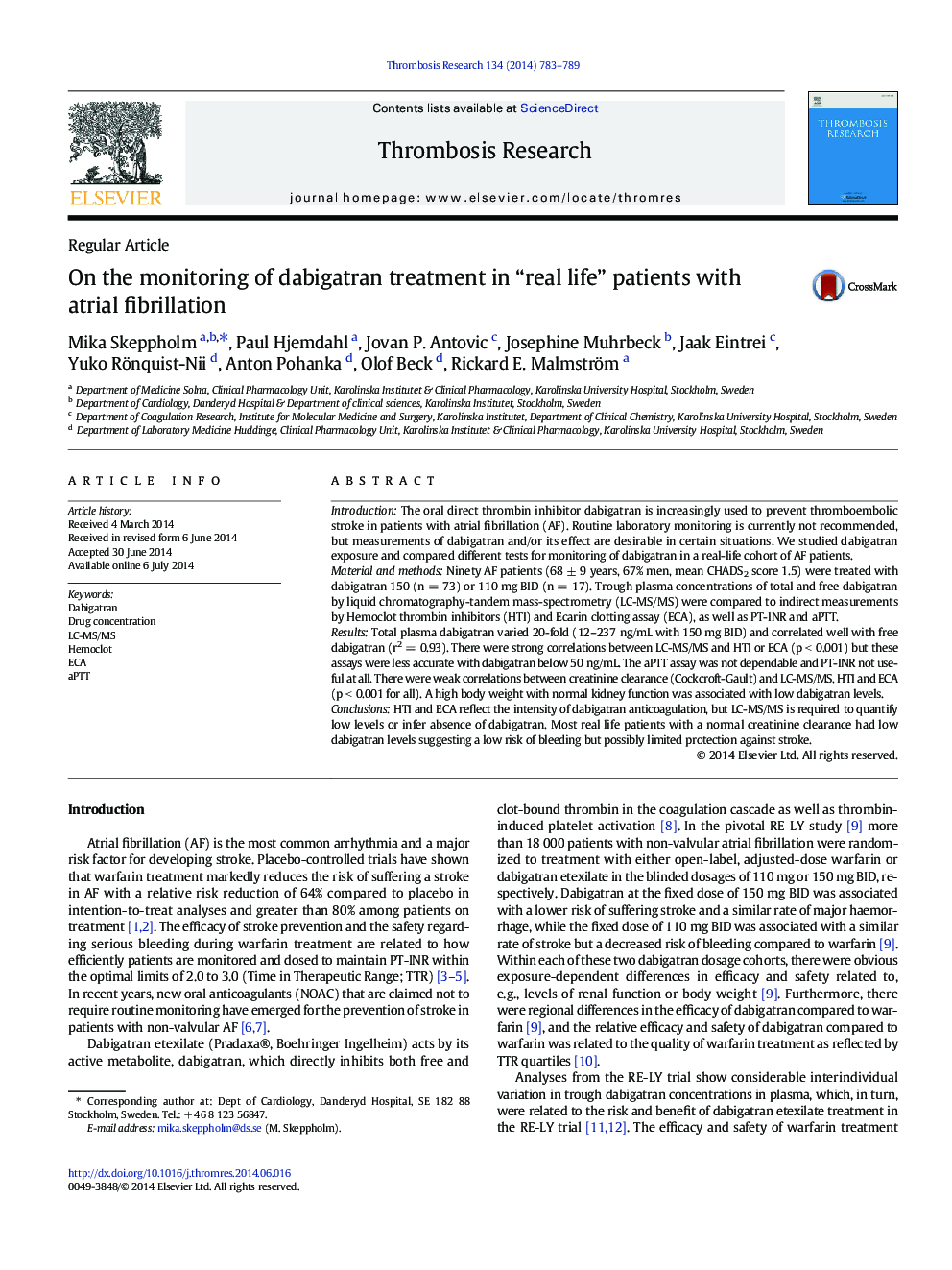| Article ID | Journal | Published Year | Pages | File Type |
|---|---|---|---|---|
| 6001080 | Thrombosis Research | 2014 | 7 Pages |
â¢The functional assays HTI and ECA reflect the intensity of dabigatran anticoagulation.â¢Direct measurement by LC-MS/MS is required to quantify low levels of dabigatran.â¢The aPTT assay was not dependable and PT-INR not useful at all.â¢Most real life patients with a normal creatinine clearance had low dabigatran levels.
IntroductionThe oral direct thrombin inhibitor dabigatran is increasingly used to prevent thromboembolic stroke in patients with atrial fibrillation (AF). Routine laboratory monitoring is currently not recommended, but measurements of dabigatran and/or its effect are desirable in certain situations. We studied dabigatran exposure and compared different tests for monitoring of dabigatran in a real-life cohort of AF patients.Material and methodsNinety AF patients (68 ± 9 years, 67% men, mean CHADS2 score 1.5) were treated with dabigatran 150 (n = 73) or 110 mg BID (n = 17). Trough plasma concentrations of total and free dabigatran by liquid chromatography-tandem mass-spectrometry (LC-MS/MS) were compared to indirect measurements by Hemoclot thrombin inhibitors (HTI) and Ecarin clotting assay (ECA), as well as PT-INR and aPTT.ResultsTotal plasma dabigatran varied 20-fold (12-237 ng/mL with 150 mg BID) and correlated well with free dabigatran (r2 = 0.93). There were strong correlations between LC-MS/MS and HTI or ECA (p < 0.001) but these assays were less accurate with dabigatran below 50 ng/mL. The aPTT assay was not dependable and PT-INR not useful at all. There were weak correlations between creatinine clearance (Cockcroft-Gault) and LC-MS/MS, HTI and ECA (p < 0.001 for all). A high body weight with normal kidney function was associated with low dabigatran levels.ConclusionsHTI and ECA reflect the intensity of dabigatran anticoagulation, but LC-MS/MS is required to quantify low levels or infer absence of dabigatran. Most real life patients with a normal creatinine clearance had low dabigatran levels suggesting a low risk of bleeding but possibly limited protection against stroke.
